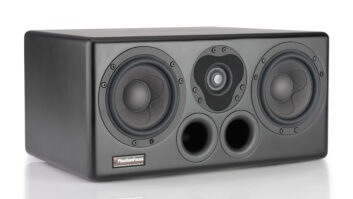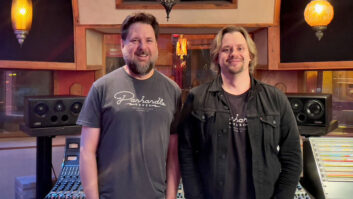World-renowned studio designer Carl Tatz could easily be described as the Frank Lloyd Wright of studio design. In the same way Wright went so far as to design eveningwear for the owners of his homes (to wear when entertaining guests), Tatz goes far beyond room acoustics—speaking into every aesthetic and ergonomic factor, from color selection and lighting design to work surface choice and seating—for his own design endeavors. It’s no secret that an aesthetically and ergonomically comfortable space can yield more productive work and longer work hours without fatigue; it only makes sense for Tatz to speak strongly into these areas alongside the main task of acoustical design.
I’ve had the opportunity to work and audition several of Tatz’s proprietary PhantomFocus monitoring system-equipped spaces, and they are sonically spectacular. For that reason, I knew that an audio production chair worthy of the PhantomFocus name is worth our attentions.
Two weeks ago, Tatz’s trademarked Silver Mesh Porcelain PhantomFocus eChair ($559) arrived at my doorstep in a 23-inch x 23.5-inch x 18-inch box. Assembly was quick and easy, taking less than ten minutes while not requiring any tools. Finetuning the abundance of controls on the chair to one’s physique took that much time again. Tatz recommends watching the video on his store site (http://shop.carltatzdesign.com/category-s/104.htm); it details all of the chair’s controls. In the video, Steven Knight, the chair’s designer and former Le Mans racecar driver (and winner) meticulously describes the chair’s features and how to properly make adjustments. The chair is available in three finishes, making it easily adaptable to any studio’s décor.
While the ubiquitous Herman Miller Aeron chair has long been a studio staple, it simply doesn’t provide any kind of lumbar support when leaning forward over a console or workspace. Although extremely comfortable, the eChair is truly a “work chair” as its unique design continues to provide lumbar support even while leaning forward over a console or work area.
I’m never crazy about working a 15- or 16-hour day, but they do happen from time to time. The eChair is the first chair I’ve ever used that allows me to work a day that long without any back fatigue whatsoever. And even though making the jump from the Aeron to the eChair feels like upgrading from a Toyota to a Lexus, the eChair actually has a smaller price tag.
When it’s all said and done, if you are going to spend more than eight hours in a chair each day, it’s critical that you are comfortable so your focus can be completely on the music rather than on your discomfort. I’ve been engineering for nearly three decades at this point and I’ve never sat on a chair more comfortable or supportive than the eChair. If you haven’t experienced the PhantomFocus eChair, you owe it to yourself—and your back—to check one out.







